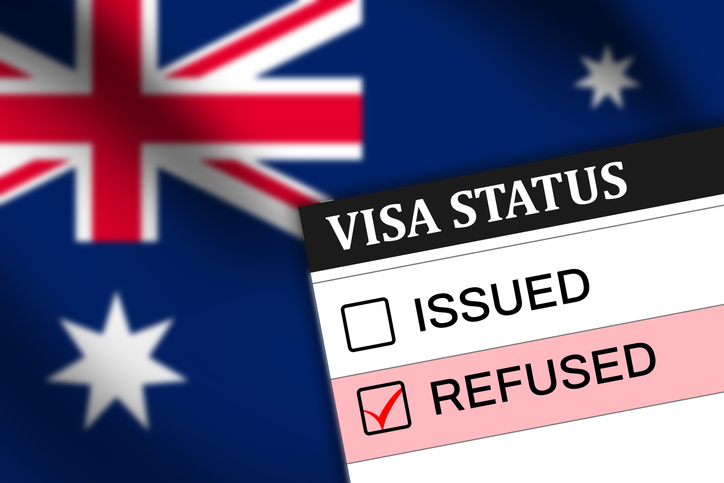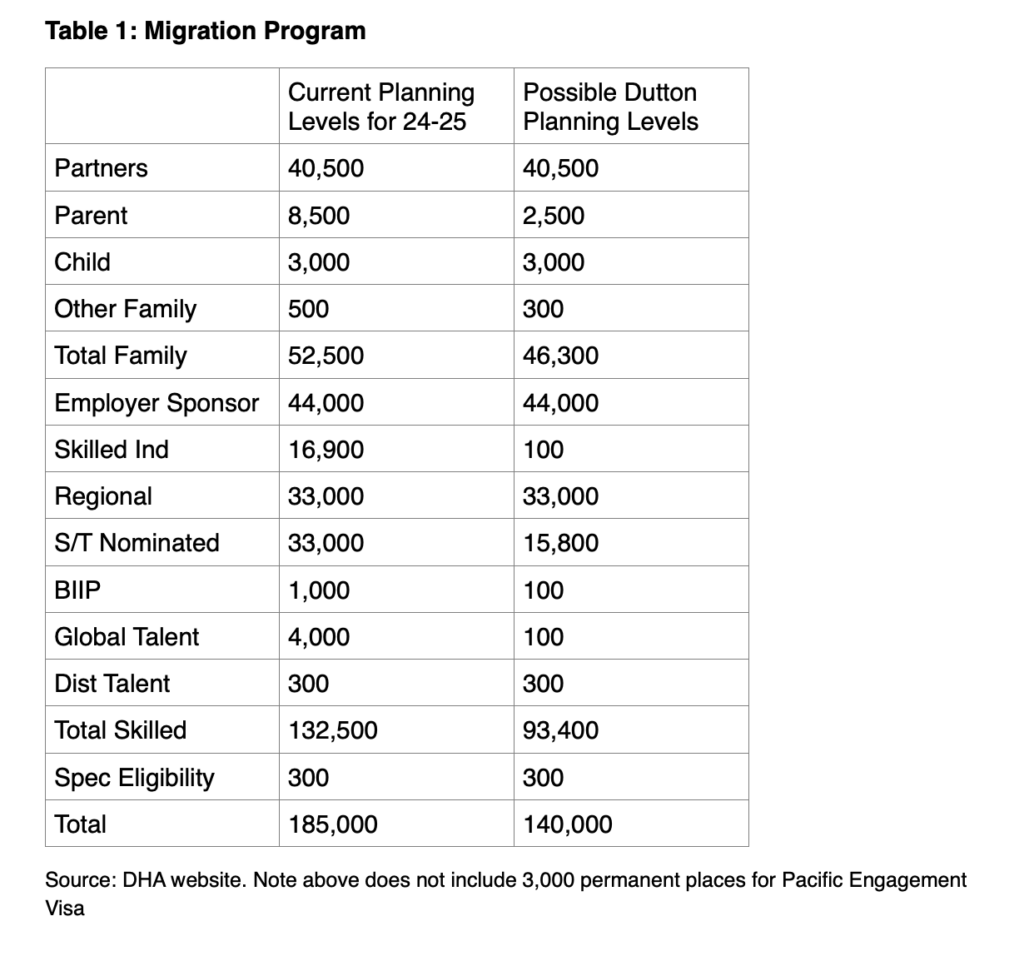In his Budget reply, Peter Dutton said he wants to cut the permanent migration program from 185,000 to 140,000 while maintaining a two-thirds to one third balance in favour of the skill stream. We subsequently found out that this is part of his plan to reduce net migration to 160,000.
The permanent migration contribution to net migration is much lower than the size of the permanent migration program because around 65 percent of the program is delivered via people who are already onshore and hence already counted in net migration.
Family stream
The family stream in 2024-25 is planned to be 52,500. If Dutton was to reduce visas issued in the family stream while maintaining the desired ratio, that would amount to a cut of around 6,200, leaving a family stream of 46,300.
But the Migration Act requires partner and child visas to be managed on a demand driven basis. While Dutton was able to illegally limit partner visas when he was minister, there is now much better knowledge in the media of the legal issues. They would take him to task if he again tried to limit these visas.
Demand for partner visas will rise over the next few years with the rise in younger temporary entrants in Australia and more Australians travelling overseas long-term. I suspect that is why Dutton has announced he will increase the permanent program in future years.
The only family visas Dutton could legally reduce is the 8,500 places for parents and 500 places for other family. Noting the massive 30-year application backlog for permanent parent visas and the hot political issue that is, I doubt Dutton would want to significantly reduce the parent visa cap. But he will have no choice given his clear commitment to reduce the program while maintaining the two-third to one third ratio. He will need to at some stage publicly reveal the inevitability of this reduction to parent visa places. That will have a massive backlash from Australia’s migrant community.
Skill stream
That would leave a skill stream of 93,400 compared to the current planning level of 132,500.
The impact of that reduction on the Budget would be significant based on Treasury’s FIONA model. Dutton will again rue that Scott Morrison, when he was Immigration Minister, used an increase in the skill stream as a Budget offset. While Treasury should never have allowed that, Dutton is again stuck with Morrison’s legacy.
In reducing the skill stream, Dutton is unlikely to try and limit employer sponsored migration as that provides the largest economic and budget benefit and is most highly valued by the business community. He will also not be allowed by Nationals Leader David Littleproud to touch the Regional Visa.
Dutton will focus on cutting the Skilled Independent visa and the State/Territory Nominated visa. The problem with cutting these back too far is that it will reduce the number of health, education, IT and construction trade workers Australia can recruit. Dutton will need to find a way to defend that decision.
For example, in 2022-23 some 5,360 registered nurses (plus accompanying family) migrated to Australia via the Skilled Independent category. In addition, around 600 medical practitioners (plus accompanying family) migrated via the Skilled Independent category in 2022-23.
A massive cut to the Skilled Independent category represents both a budget/economic cost as well as a cost to the health system.
In terms of permanent migration, Dutton will also need to consider the new Pacific Engagement Visa (PEV) which, for no good reason, is not counted in the permanent migration program even though it is a permanent visa. This is not a well-designed visa and Dutton may feel he can abolish it and just wear the backlash from Pacific Island nations. He is used to that.
Implications for net migration of permanent migration cuts
Prior to the pandemic, the contribution of the permanent migration and humanitarian programs to net migration ranged between 70,000 to 85,000. With the cuts to permanent migration being proposed by Dutton, he could reasonably expect that contribution to fall to around 65,000. That is because his cuts to permanent migration, other than the cut to the Humanitarian Program, will mainly impact people who secure permanent migration after having been in Australia many years. These are people who have already been counted in net migration.
By comparison, the Labor Government would need to be counting on the permanent migration intake to contribute around 90,000 to net migration due to the larger Humanitarian Program and the new PEV, both of which are mainly visas that go to people who are offshore.
It should be noted that the state of the labour market does impact the contribution of permanent migration to net migration. For example, in 2014-15 when unemployment spiked to over 6 percent, the permanent visa contribution to net migration was 70,210 when the permanent migration program was 190,000. Skilled migrants in particular tend to depart at a higher rate when the labour market is weak.
Impact on housing
Dutton says his cuts will free up 100,000 homes, 40,000 in the first year. How he calculates that remains a mystery but perhaps he thinks his voters wont care at all about the details or the veracity of his claims.
Abul Rizvi PhD was a senior official in the Department of Immigration from the early 1990s to 2007 when he left as Deputy Secretary. He was awarded the Public Service Medal and the Centenary Medal for services to development and implementation of immigration policy, including the reshaping of Australia’s intake to focus on skilled migration, slow Australia’s rate of population ageing and boost Australia’s international education and tourism industries.


